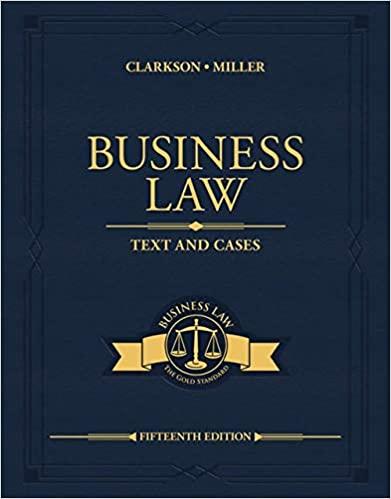Question
One major area of police liability involves accidents during high-speed pursuits of suspects. The U.S. Supreme Court dealt with one aspect of this topic in
One major area of police liability involves accidents during high-speed pursuits of suspects. The U.S. Supreme Court dealt with one aspect of this topic in Scott v. Harris, 550 U.S. (2007). The suspect in this case became a quadriplegic as a result of the police chase. He sued the police officer saying the officer violated suspect's "clearly established" constitutional right (a requirement for plaintiff to succeed in Section 1983 civil liability cases in federal law) under the Fourth Amendment by ramming the fleeing suspect's vehicle in a high-speed chase. Voting 8-1, the Court rejected this allegation, saying that the officer's actions were reasonable under the Fourth Amendment because the videotape of the car chase showed that, contrary to suspect's claim, his driving posed "an imminent threat to the lives of any pedestrians who might have been present, to other civilian motorists, and to the officers involved in the chase."
Answer the following questions:
How important was the videotape in the decision? Would the decision have been the same without the videotape? How important was it that the officer received permission for the maneuver from his supervisor? How important is this case to police officers?
500 words total.
Step by Step Solution
There are 3 Steps involved in it
Step: 1

Get Instant Access to Expert-Tailored Solutions
See step-by-step solutions with expert insights and AI powered tools for academic success
Step: 2

Step: 3

Ace Your Homework with AI
Get the answers you need in no time with our AI-driven, step-by-step assistance
Get Started


